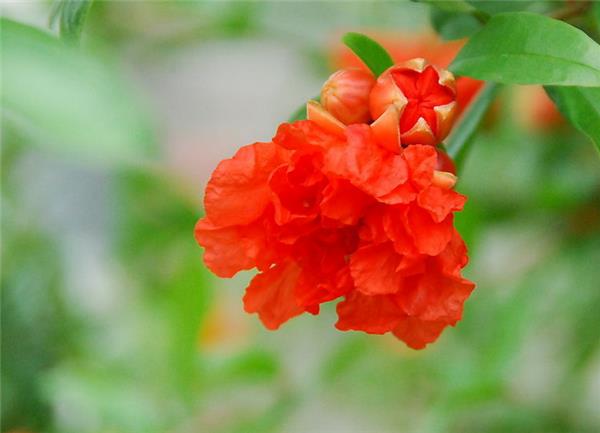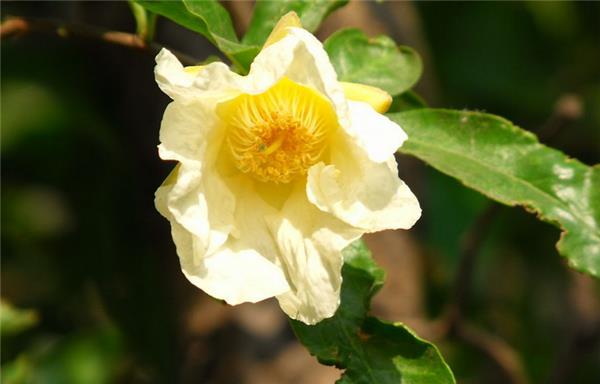[efficacy and function of pomegranate flower] what are the functions of pomegranate flower
Pomegranate is a very delicious fruit, not only bright and juicy, but also full of particles, and pomegranate flowers are the flowers of pomegranate trees, which can often be seen in our daily life, this kind of flower not only has ornamental value, but also has very good medicinal value. Today, I share with you the picture appreciation of pomegranate flowers and the efficacy and function of pomegranate flowers.

I. the efficacy and function of pomegranate flowers
If you plant small pots with pomegranate flowers on the windowsill and balcony at home, you can make the home environment lively and elegant.
2. Pomegranate flowers also play a certain role in greening. Pomegranate is a kind of plant, which can not only effectively send harmful gases such as sulfur dioxide, chlorine, ether, ethylene, carbon monoxide and nitrogen peroxide to purify the air and promote physical health. and red and green plants can also enrich visual enjoyment and experience natural breath and feeling.
3, pomegranate flowers and leaves have greater medicinal value, first of all, pomegranate internal use can stop nasal obstruction, hematemesis and traumatic bleeding, but also can treat female leucorrhea too much, external use can treat otitis media, secondly pomegranate tender leaf oral administration can strengthen stomach and intestines and aid digestion, external use can treat eye diseases, skin diseases, and modern medical research also believes that pomegranate can inhibit a variety of bacteria and skin bacteria.

II. Culture methods of pomegranate flowers
Pomegranate flowers are widely distributed, and they are cultivated in many places, and can also be cultivated in many soils and environments. Generally speaking, pomegranates cultivated in courtyards or dwarfs can also be cultivated in pots. The life span is relatively long, if properly cultivated, it can live for decades, and in some tropical rain forests, pomegranate trees can grow for more than 200 years. As an evergreen fruit tree, pomegranate flowers like light, unlike some family decoration of tiger tail orchid, gentleman orchid, white palm these different, only need to give enough water, in time in the strong light can grow very well. As pomegranate trees are also planted in the north, their drought tolerance is still relatively strong. Generally, the best breeding method is semi-cultivated and semi-wild, and the general soil can grow, as long as the annual temperature is not less than 10 degrees Celsius, then the leaves will fall off and will join hibernation, and the summer temperature is very suitable for growth. so pomegranate trees bloom better in summer. Pomegranate trees generally sprout in early spring, and then begin to grow branches and leaves, generally grow faster in summer, but generally impossible to blossom in the first year, generally blossom more in the second year, and then bear fruit, and then grow larger in three years.

3. Pruning of potted pomegranate trees
Winter pruning is also known as dormant pruning, which should be carried out after falling leaves to before budding. In arid and cold areas, severe winter pruning is prone to frost injury, so it can be postponed to spring sprouting.
In the treatment of the mother branch, in the pruning of the mother branch, we should first identify the flower bud and the mother branch bearing the flower bud, retain as many as possible the mother branch with flower bud, and keep 5 vegetative branches around it, and make the ratio of the mother branch to the vegetative branch about 1 ∶ 5m 15; if the original branch is too dense and does not form flower buds or flower buds, then just prune to the branchlets that do not intersect, overlap and leave room.
The treatment of big branches should be carried out in accordance with the principle of "three sparse and three densities" (dense big branches and sparse twigs, dense upper sparse and lower parts, and dense peripheral sparse inner bore). The distance between the three main branches and lateral branches should be kept at a distance of 80 million meters from each other, so that the branchlets (branch group) have room for growth. When the distance between the main branch and the lateral branch is small, the big branch can be thinned or pulled out.

The pruning of pomegranate is very important, it can have an impact on the flowering and fruiting. Heavy pruning in autumn and winter, after the new branches grow, the branches that are too dense, cowardly and clustered at the base should be cut off in time to ensure adequate nutrition of the main branches, which is conducive to flowering and fruiting.
Related
- Wuhan Hospital Iron Tree Blooming Result Was Instantly Frightened by the Gardener Master
- Which variety of camellia is the most fragrant and best? Which one do you like best?
- What is the small blue coat, the breeding methods and matters needing attention of the succulent plant
- Dormancy time and maintenance management of succulent plants during dormancy
- Minas succulent how to raise, Minas succulent plant pictures
- What are the varieties of winter succulent plants
- How to raise succulent plants in twelve rolls? let's take a look at some experience of breeding twelve rolls.
- Attention should be paid to water control for succulent plants during dormant period (winter and summer)
- Watering experience of twelve rolls of succulent plants
- Techniques for fertilizing succulent plants. An article will let you know how to fertilize succulent plants.



